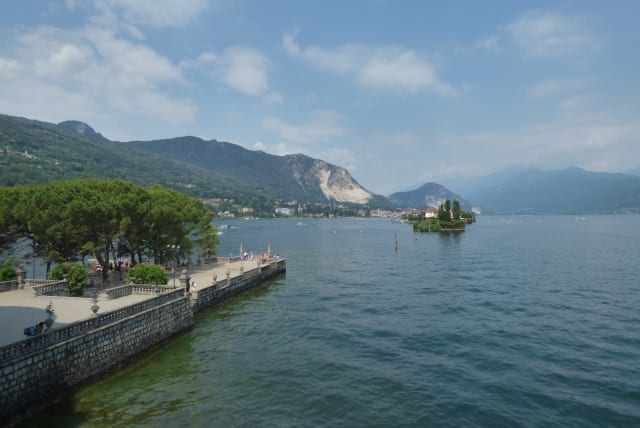Dark secrets of a cursed lake: Solving the mystery behind over 700 deaths

Lake Lanier in Georgia holds a chilling history, claiming numerous lives and harboring a haunted past. What is the cursed lake's secret?
Lake Lanier, nestled in the US state of Georgia, attracts millions of visitors annually, luring them with its refreshing waters and warm Sun. However, unbeknownst to many, this man-made lake harbors a sinister past, having claimed the lives of approximately 200 people in the past three decades alone.
With an estimated death toll of over 700 since its creation in 1956, Lake Lanier stands as one of the deadliest bodies of water in the United States.
The dark, death-filled history of Lake Lanier
Throughout the years, Lake Liner has witnessed numerous deaths, with some years marking the loss of more than 20 lives. Recent months saw the recovery of two additional bodies, further perpetuating the lake's grim reputation. Causes of death vary, ranging from boating accidents and drownings to inexplicable mishaps.
Locals whisper tales of the infamous "Lady of the Lake," a mysterious figure said to haunt the waters, cursing those who encounter her.
However, the true story behind Lake Lanier's ominous past unveils a trail of rape, murder, lynching, and the tragic deaths of over 700 people. Eerily, remnants of a once-thriving community lie submerged beneath the lake's surface, providing a chilling reminder of the darkness surrounding the area. Beneath the depths of Lake Lanier, the remnants of Oscarville lie in solemn repose.
Oscarville was once a vibrant city with a thriving black community, home to African-American carpenters, blacksmiths, ranchers, and more. In 1912, the body of 19-year-old Mae Crow, a white girl who was allegedly raped and murdered, was discovered in the nearby woods.
Blaming the black community, their white neighbors unleashed the Night Riders, a violent gang that sought vengeance. They apprehended a 16-year-old boy suspected of the crime, brutally murdered him, and displayed his lifeless body on a telephone pole in the city's center.
Retaliation continued as the Night Riders bombed the local church, set buildings ablaze, and forced nearly a thousand residents to flee for their lives within a mere four months.
George Rucker, a descendant of Oscarville's former residents, recounts the harrowing tale of his great-grandfather, Byrd Oliver, who lost everything.
Rucker said, "When the Night Riders came through, they had to leave everything. The main thing they left was property and my grandfather had 100 acres."
As the mob pursued them, the displaced residents sought refuge near the Chattahoochee River. Upon reaching the bridge, they faced a haunting ultimatum: Swim or drown. Regrettably, most did not survive, with Rucker's grandfather losing several siblings in the desperate escape.
Lake Lanier's sinister transformation
As white families seized control of what remained of Oscarville's properties, the land gradually transitioned into government ownership over the years. In 1956, the creation of Lake Lanier resulted in the flooding of tens of thousands of acres, including the remnants of Oscarville. Originally intended to generate hydroelectric power and aid in navigation and flood control of the Chattahoochee River, the lake's construction displaced around 250 families and 15 businesses.
Prior to inundating the land, workers from the US Army Corps of Engineers demolished hazardous structures, such as bridges and barns, which had been abandoned. Alongside these hazards, the army relocated 20 cemeteries, meticulously identifying and relocating marked graves. However, it is likely that unmarked graves were left undisturbed, lying beneath the lake's surface, as reported by CNN.
Ghostly legends and frightening tragedies
The displacement of graves and the submerging cemeteries sparked tales of curses and ghosts haunting Lake Lanier. A mere two years after the lake's creation, the first tragedy occurred, reinforcing legends of the supernatural.
In 1958, a car carrying two women, Susie and Delia, careened off a bridge, plunging into the lake's depths. The following year, fishermen discovered a woman's body without hands, clad in a blue dress. Unable to confirm her identity, some locals reported sightings of her ghost, earning her the moniker "Lady of the Lake." Some say that she attempts to lure unsuspecting victims into the murky waters, forever condemned to haunt the bridge at night.
In 1990, the mystery surrounding the "Lady of the Lake" unraveled further when workers constructing a bridge discovered human remains from a 1958 Ford sedan submerged 30 meters deep in the lake. The remains were identified as Susie's, leading authorities to believe that the woman discovered in 1959 was Delia.
Despite the discovery, Lake Lanier continues to be plagued by unsettling incidents. Since its inception, the lake has claimed the lives of 700 people, with 200 deaths occurring after 1994, as reported by the Miami Herald. Divers who have explored the lake's depths have encountered chilling discoveries, stumbling upon lifeless body parts during their adventures.
In response to the lake's perilous nature, authorities have taken measures to prioritize the safety of visitors. Popular beaches, such as Margaritaville, have prohibited swimming to mitigate risks, and fences now wall of hazardous areas within the water.
Authorities and locals attribute the high number of drownings not to curses and apparitions, but to the hidden perils lurking beneath Lake Lanier's surface. The remains of old structures from Oscarville and towering trees up to 20 meters in height pose significant dangers, making escape challenging for swimmers in distress.
As the years pass, intrepid divers continue to document their expeditions, capturing footage of submerged debris and dilapidated remnants concealed below the lake's shimmering facade.
Jerusalem Post Store
`; document.getElementById("linkPremium").innerHTML = cont; var divWithLink = document.getElementById("premium-link"); if (divWithLink !== null && divWithLink !== 'undefined') { divWithLink.style.border = "solid 1px #cb0f3e"; divWithLink.style.textAlign = "center"; divWithLink.style.marginBottom = "15px"; divWithLink.style.marginTop = "15px"; divWithLink.style.width = "100%"; divWithLink.style.backgroundColor = "#122952"; divWithLink.style.color = "#ffffff"; divWithLink.style.lineHeight = "1.5"; } } (function (v, i) { });

